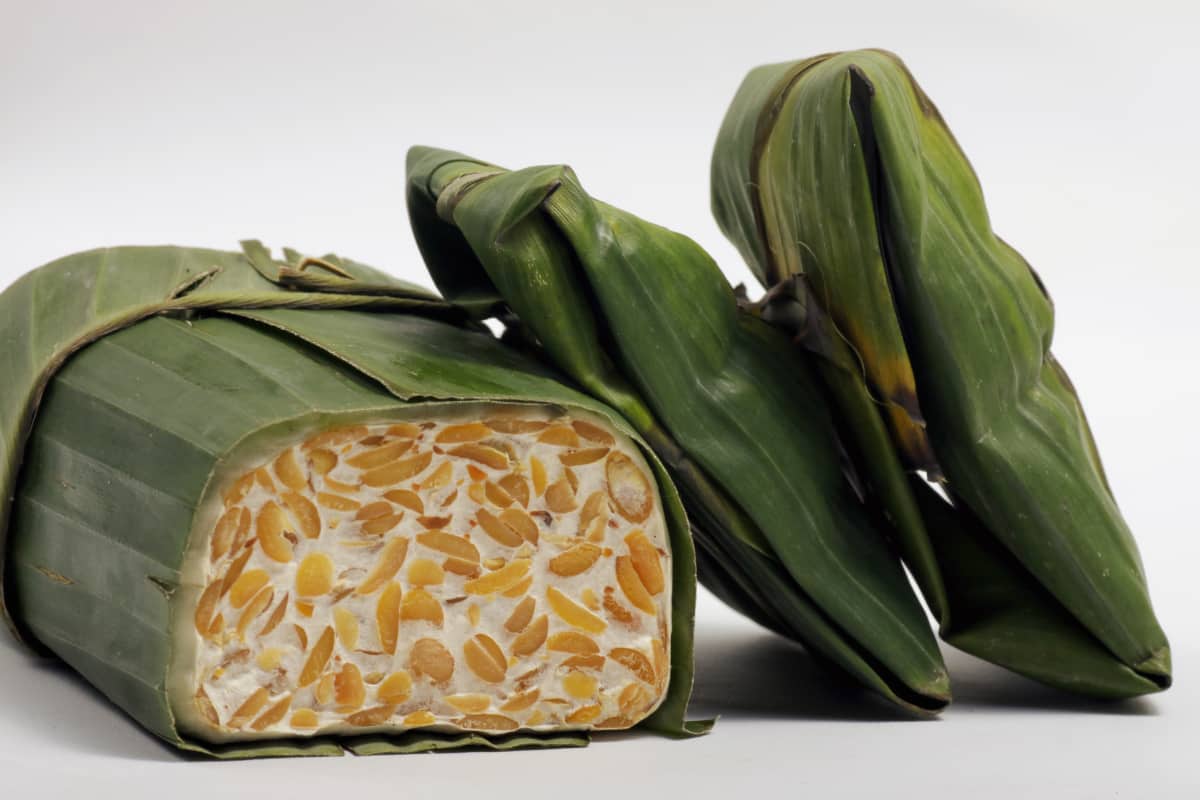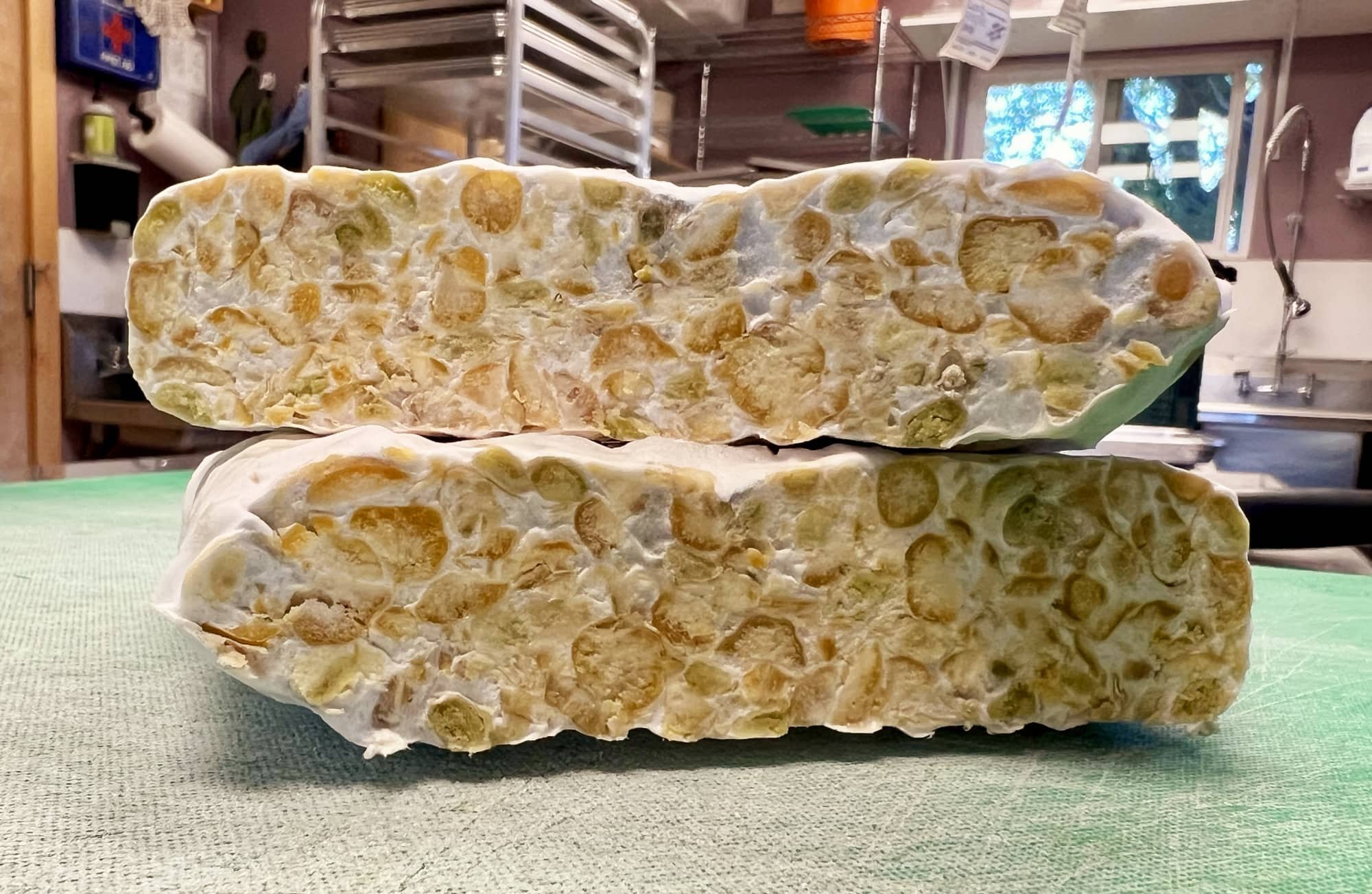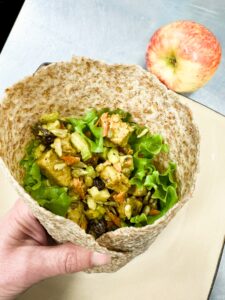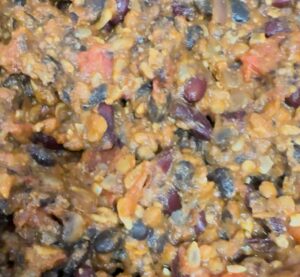What is tempeh? Unraveling the Mysteries of this Nutrient-Rich Food
Tempeh, a traditional Indonesian food, has become increasingly popular worldwide as a versatile and nutritious plant-based protein. But what is tempeh? This fermented (traditionally) soybean product has a unique taste, texture, and nutritional profile that sets it apart from other soy-based products like tofu. In this blog post, we'll delve into the history of tempeh, how it's made, the nutritional benefits it offers, and the emerging trend of soy-free fresh tempeh.
History of Tempeh

Tempeh originated in Indonesia, specifically on the island of Java, where it has been a staple food for centuries. Its exact origins are unclear, but it is believed to have been developed as a byproduct of the tofu-making process. In the 16th century, the tempeh-making technique was documented by Dutch explorers who visited Indonesia during their search for new trade routes.
The word "tempeh" is derived from the Javanese term "tempe," which means "fermented bean cake." Over the centuries, tempeh has played a crucial role in the traditional Indonesian diet, providing an affordable and abundant source of protein, especially for those who could not afford animal-based protein sources.
How Tempeh is Made

Traditionally, tempeh is made from whole soybeans that undergo a fermentation process using a fungus called Rhizopus oligosporus. The process begins by soaking and dehulling the soybeans, which are then boiled or steamed to soften them. Afterward, the beans are drained and spread out to cool before being inoculated with the Rhizopus oligosporus spores.
Next, the tempeh is left to ferment. During fermentation, the fungus breaks down the soybeans' complex carbohydrates, proteins, and fats into simpler compounds, making them more digestible and bioavailable. The mycelium, or root-like structure of the fungus, binds the soybeans together, creating a dense, cake-like texture.
Packaging Black Beauty tempeh before incubation
In Indonesia, the ambient temperature is fairly consistent and tempeh is often fermented outside. We use a fermentation tent with a heater and temperature controller to keep our tempeh at the perfect temperature while the mycelium grows. The fermentation process usually takes between 24 and 48 hours, after which the tempeh is ready to be consumed.
Nutritional Benefits of Tempeh
Tempeh offers numerous health benefits, making it a popular choice for those seeking a nutrient-rich, plant-based protein. Some of the key nutritional benefits of tempeh include:
- High-quality protein: Tempeh is a complete protein, containing all nine essential amino acids that the human body cannot produce. This makes it an excellent alternative to animal-based protein sources for vegetarians and vegans.
- Rich in vitamins and minerals: Tempeh is a good source of vitamins and minerals, including B vitamins, calcium, iron, copper, magnesium, manganese, selenium and zinc depending on the tempeh variety. It does sometimes contain vitamin B12, a nutrient typically found only in animal products, but the amount can vary quite a bit so it's best to make sure you are getting your B12 from a more reliable source.
- Improved digestibility: The fermentation process that creates tempeh partially breaks down the proteins and carbohydrates, making them more accessible and easier to digest than unfermented soybeans.
- Reduced phytic acid content: Phytic acid, a compound found in many plant-based foods, can interfere with the absorption of minerals like iron and zinc. The fermentation process in tempeh production reduces the phytic acid content, allowing for better mineral absorption.
- Prebiotic benefits: As a high-fiber food, tempeh contains the perfect food for a healthy microbiome.
- Probiotic benefits: As a fermented food, tempeh contains beneficial bacteria that can support gut health and promote a balanced microbiome. Keep in mind that the cooking process will kill these bacteria but your tempeh is still quite nutritious!
Soy-Free Fresh Tempeh

While traditional tempeh is made from soybeans, soy-free tempeh has gained popularity in recent years. This alternative is ideal for those with soy allergies or sensitivities.
Soy-free tempeh is typically made from other legumes, such as chickpeas (pictured above), black beans, or lentils. The process of making soy-free tempeh is similar to that of traditional tempeh, involving the soaking, boiling, and inoculation of the legumes with Rhizopus oligosporus spores. As with soy-based tempeh, the fermentation process breaks down complex carbohydrates and proteins, making them more digestible and bioavailable.
The nutritional benefits of soy-free tempeh may vary depending on the legume used, but it generally remains a good source of plant-based protein, vitamins, and minerals. Chickpea tempeh, for example, is rich in protein, fiber, iron, and magnesium, while black bean tempeh is high in protein, fiber, and antioxidants.
In addition to offering a soy-free alternative, these varieties of tempeh also provide unique flavors and textures, adding variety to your plant-based meal options. Soy-free tempeh can be used in many of the same ways as traditional tempeh, such as stir-fries, sandwiches, salads, and more.
Tempeh is a versatile, nutrient-rich food that provides numerous health benefits, making it a valuable addition to a balanced diet. Its unique history, fermentation process, and nutritional profile set it apart from other plant-based protein sources. With the emergence of soy-free tempeh options, even those with soy allergies or sensitivities can enjoy the benefits of this delicious and nutritious food.
Whether you're a vegetarian, vegan, or simply looking to incorporate more plant-based protein sources into your diet, tempeh offers an excellent option that is both tasty and nutritious. Give it a try in your next meal and discover the incredible flavors and textures that tempeh can bring to your culinary creations.









